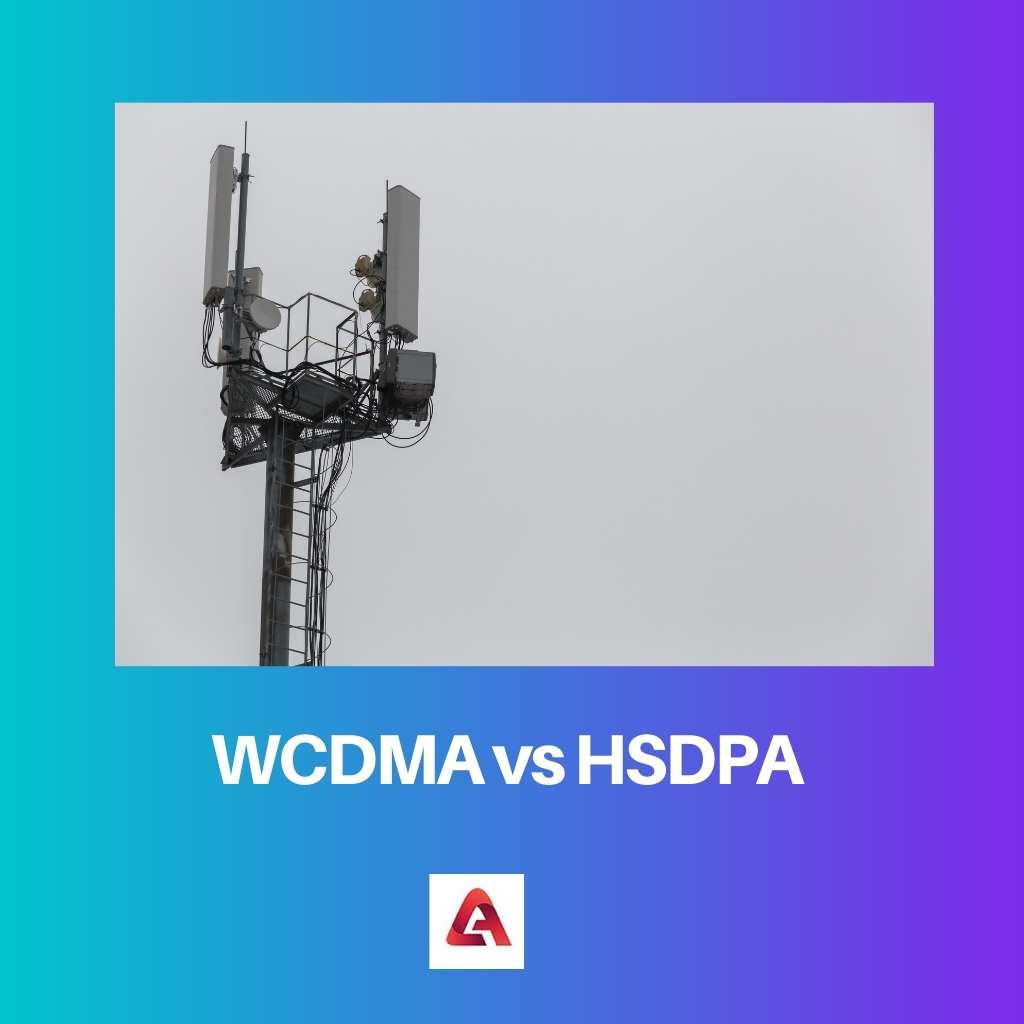Even if these terms may or may not be familiar to you at the moment. They are technologies that let users connect to the internet at high speeds.
We’ll go through the history of WCDMA and HSDPA, as well as the differences between the two technologies.
Other technological jargon will be illustrated in simple languages throughout the articles so that you have a complete understanding of the subject.
Key Takeaways
- WCDMA is a 3G mobile communication standard, while HSDPA is a high-speed data transfer technology that operates on WCDMA networks.
- HSDPA provides faster data transfer speeds than WCDMA.
- WCDMA is a widely adopted technology globally, while HSDPA is an evolution of WCDMA and is used in more advanced networks.
WCDMA vs HSDPA
WCDMA is a 3G standard that uses code division multiple access to provide high-speed data transfer rates and voice communication. HSDPA is a 3G technology used to increase the data transfer rate of WCDMA networks in the downlink. HSDPA has significantly faster data transfer rates than WCDMA.

WCDMA technology is used as an air interface between user equipment (such as your phone) and the logical node B (for instance the mobile tower).
This is a modern technology that is distinct from previous technologies that have been used.
It provides third-generation cellular communication, also known as 3G. As a result, we can make video calls, but this technology is growing, as we will discuss later in this article.
You may have noticed a term called ‘downlink’ in HSDPA from the enlarged form. The emphasis on this term is because this technology allows for a speed increase of 14 megabits per second.
The direction of the wave created between the tower and the user equipment is called the downlink. The data can change in the real world, although the theory focuses on 14 Mbps.
Comparison Table
| Parameters of Comparison | WCDMA | HSDPA |
|---|---|---|
| Is it the first UMTS version? | Yes | No |
| Speed of downlink | Upto 384 kbps. (per user) | Upto 14.4 mbps. (per user) |
| Does it have similar downlink and uplink range? | Yes | No |
| Year of deployment | 2001 | Mid 2005 |
| Which of the two technologies is faster? | It is not as fast as the other. | Itis definitely the faster one. |
What is WCDMA?
The history of the high-speed cellular revolution began with the development of WCDMA, the first technology under the UMTS (Universal Mobile Telecommunications System). The technology was launched in the year 2001.
In October of 2001, NTT Docomo was the first to launch a WCDMA 3g network.
The direct sequence Code Division Multiple Access channel access method and Frequency Division Duplexing are the methods used to bring in the high speed.
As a result, it was created in tandem with the 3G cooperation initiative. This program in turn includes evolving core cellular networks which belong to the Global System for Mobiles or GSM.
FDD and TDD are the two modes that WCDMA supports. FDD, as we’ve just discussed, works by deploying codes and frequencies to distinguish one user from another.
There are two sorts of frequencies: uplinks and downlinks. TDD, or time division duplex, adds the time factor in addition to isolating users with code and frequencies.
In this case, the same frequency is used for both uplinks and downlinks. And for the air interface it uses the CDMA technology, wide length symbolizes the broader aspect o connection that it provides of 5 MHz.
It’s also worth noting that WCDMA’s TDD mode combines both CDMA and TDMA.
What is HSDPA?
HSDPA stands for High-Speed Downlink Packet Access, as we all know. So, what exactly is it, and how is it faster than the former?
The technology allows for a downlink of 14 Megabits per second. And that is regarded as a fast speed.
Another advantage of this technology is that it concentrates more on the downlink, allowing for faster downlink deployment.
The peak data of the uplink is not changed in comparison to the downlink; rather, it is the same as the uplink and downlink of the previous, which is 384 kbps.
And the technology was designed specifically for packet data. As a result, circuit-switch voice and data services are unaffected.
It’s essentially a radio access system. Where considerable changes to the radio interface are implemented, the impact on the core network is modest
Aside from that, HSDPA is built to indicate asymmetric data services, in which a large portion of data transmission occurs in the downlink while just a small portion occurs in the uplink.
When UTMS technologies are mapped, HSDPA is considered a release 5 system since it employs the same band length as release 99 (UTMS), which is 5MHz.
It can simultaneously support voice and data in the same bandwidth. It keeps the R99 basic network design and doesn’t include any new network components.
Aside from that, it’s entirely compatible with Release 99.
Main Differences Between WCDMA and HSDPA
- WCDMA is the first UMTS version whereas HSDPA was developed after the former.
- WCDMA enables 384 kbps whereas HSDPA enables 14 Mbps (downlink).
- WCDMA does not have lower latency times than HSDPA.
- WCDMA neither has as fast packet scheduling as HSDPA.
- WCDMA (3G) is not as fast as HSDPA (3.5G).




